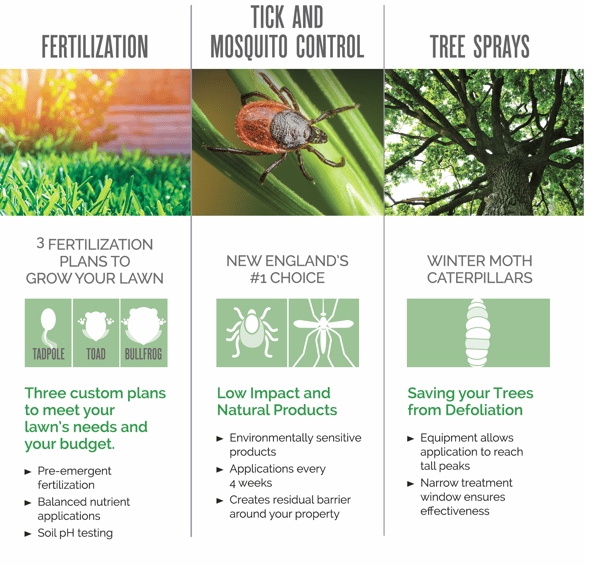508-587-4309 | Customer Login
WINTER MOTH CATERPILLAR TREE SPRAYS
NEW ENGLAND'S #1 CHOICE FOR TREE APPLICATIONS, TICK AND MOSQUITO CONTROL, AND FERTILIZATION.

HELPFUL INFORMATION ON THE WINTER MOTH CATERPILLAR THAT IS DEFOLIATING TREES IN MASSACHUSETTS
HISTORY
 The winter moth that is defoliating trees in Massachusetts is a non-native pest that was first identified in the Bay State in 2003. Although the signs of defoliation and outbreak were first noticed in the 1990's, it was incorrectly assumed by experts to be caused by a native species. It wasn't until nearly 10 years later that the correct species was identified as the winter moth, which was becoming especially prevalent on the south shore.
The winter moth that is defoliating trees in Massachusetts is a non-native pest that was first identified in the Bay State in 2003. Although the signs of defoliation and outbreak were first noticed in the 1990's, it was incorrectly assumed by experts to be caused by a native species. It wasn't until nearly 10 years later that the correct species was identified as the winter moth, which was becoming especially prevalent on the south shore.
*Source: UMassAmherst, The Center for Agriculture, Food, and the Environment
LIFE CYCLE
Moths are the adult stage of the winter month. They emerge from pupae in November and are capable of remaining active into January when temperatures are above freezing. The male moths (light-brown to tan color) are highly attracted to lights and are often visible flying at night near outdoor lighting. Females lay between 150-300 eggs, which hatch in March when temperatures hover around 55 degrees. In most cases, the hatching occurs just before bud outbreak of deciduous trees. These newly hatched caterpillars crawl over trees and begin the process of defoliation.
*Source: UMassAmherst, The Center for Agriculture, Food, and the Environment
TREATMENT
The professional treatment must take place during a relatively narrow window in the spring.This time frame allows for the proper application to be dispersed at the correct droplet size using high-pressure equipment. This treatment method allows the target pest to become affected by the application, thus reducing the ability to rapidly defoliate trees.
